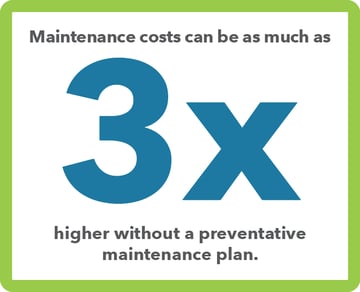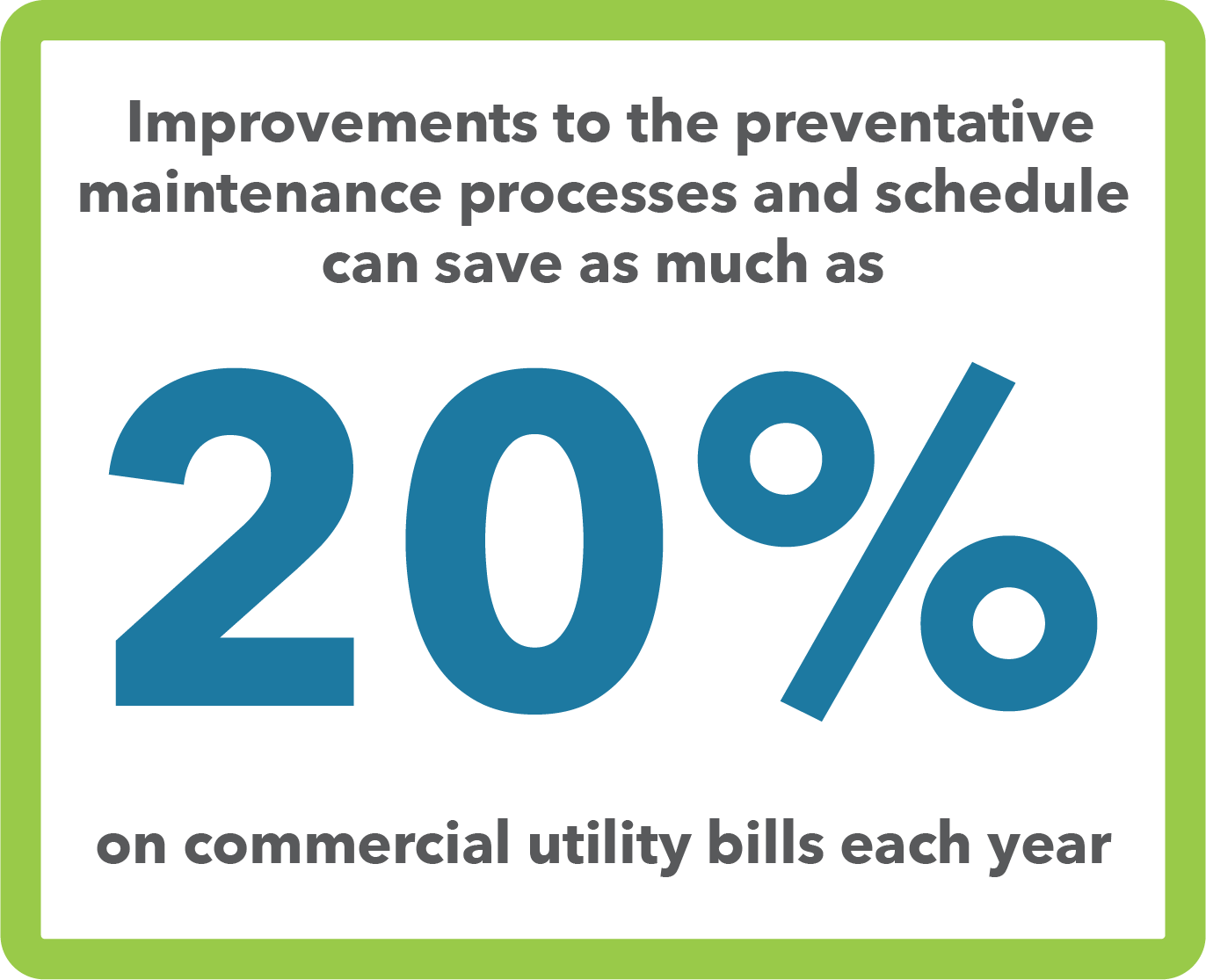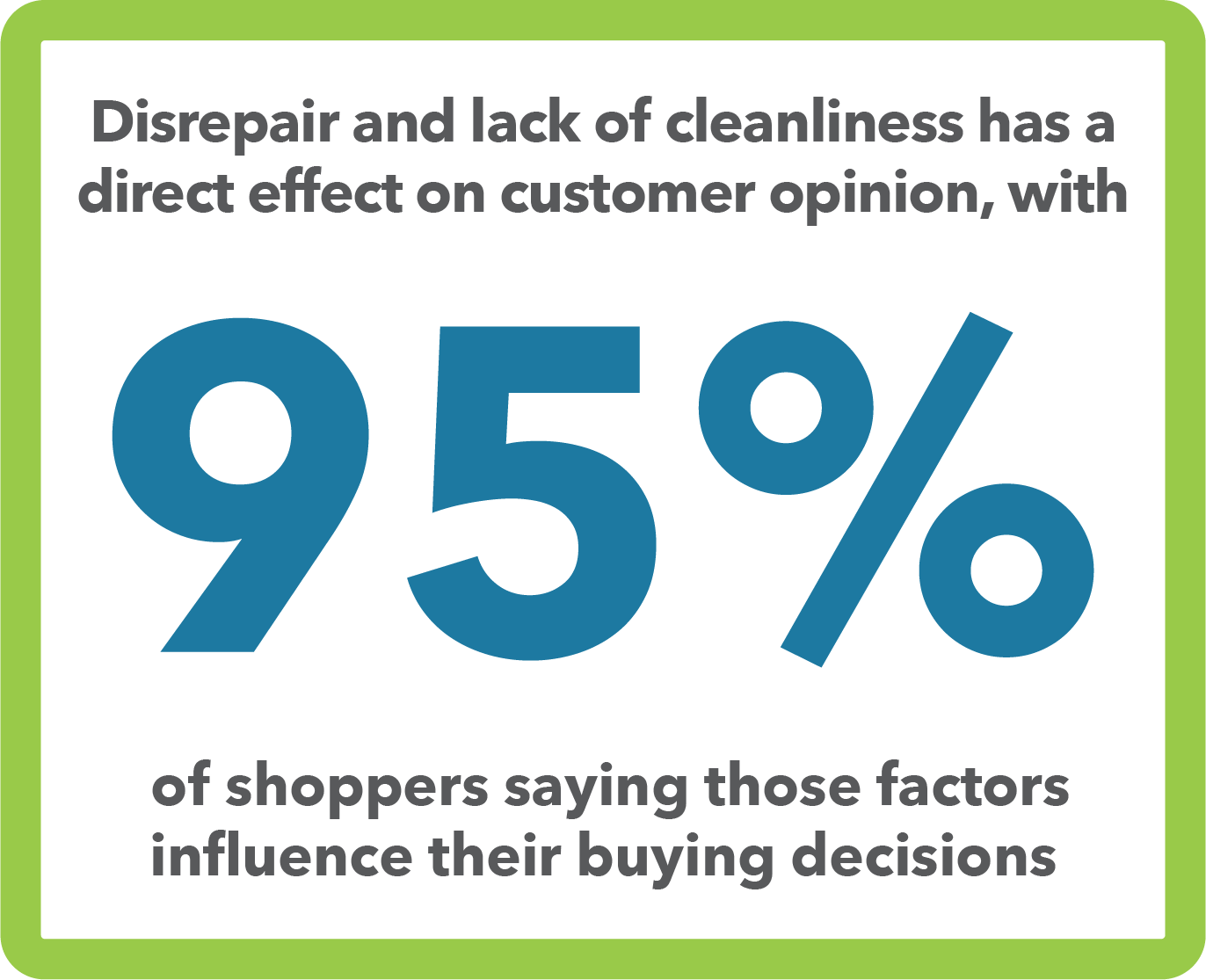The hard-dollar bottom line of preventive maintenance is this: It has a demonstrable impact on the budget.
Preventive maintenance can prove its ROI if facilities managers know which metrics to analyze. These stats vary by facility, and they aren’t always cut-and-dried. For example, even soft benefits, such as customer perception and satisfaction, carry weight, according to FacilitiesNet.
Maintenance affects employee productivity and the emotions of customers, clients or the people who occupy a residential building. And all of those elements relate to the budget in a direct or indirect way. These four examples are just a few measurable effects:
To read more about the direct or indirect costs that affect your budget, check out our whitepaper: How to Calculate the True Cost of Facilities Maintenance.
#1 Reduced Repair Costs
|
Repairs take a reactive approach, but preventative maintenance is proactive. Repairs are also costly, especially when a defect isn't discovered until it has evolved into a serious malfunction. Preventative maintenance reduces repair costs because it catches smaller issues early. Left to their own devices, small material defects on-site can turn into major, cross-departmental expenses. But a task as straightforward as cleaning interrupts the chain of events that could otherwise end in a mechanical system malfunction. Scheduled, routine maintenance removes grit that mars flooring, heads off surface corrosion, and catches leaks before they become floods that ruin merchandise or fixtures.
|
|
#2 Lower Business Operation Costs
|
Few things are durable and resilient enough perform like new for the long term without preventative maintenance. With mechanical systems, poor performance adds up to higher business operating costs. Consider a building's heating and cooling performance: The U.S. Department of Energy recommends monthly HVAC maintenance to maximize efficiency and lower operating costs. A dirty filter adds stress to the air intake system and increases energy consumption, but preventative maintenance breaks the inefficient cycle, saves energy and reduces costs.
|
|
#3 Preservation of Big-Ticket Investments
|
Preventative maintenance equals preservation. Repairs nip away at the budget, but replacement takes out a serious bite. For big-ticket items, such as a new roof or flooring, costs can skyrocket. Maintenance helps preserve the expected lifespan of expensive fixtures and systems and reduces the risk of unexpected failure. When some systems give way to defects, other systems can suffer as a result. That compounds the repair and replacement cycle as well as related costs. According to the Journal of Architectural Engineering, a failing, leaking roof compromises the whole building envelope. Preventative maintenance protects it.
|
|
#4 Better Brand Image and Customer Relations
|
Preventative maintenance might seem ordinary compared to a forward-thinking marketing and branding message, but a sophisticated message can't exist for long without it. Although customer opinion is a soft effect of preventative maintenance, it can have a lasting impact on sales. Al Tierney, author of Retail Facilities Maintenance: The Circle of Management: A 30-Year Experience Management Narrative (2013), says "unresolved maintenance and repair problems" affect customer perception and ultimately company profits. Maintenance is an integral part of a multifaceted branding and reputation strategy. It extends to customer willingness to buy, long-term loyalty and the site's real estate value. |
ISSA survey, via CleanLink. |
Perhaps one of the greatest advantages of a maintenance program is reduced down time. In a restaurant, for example, prevention keeps equipment working as planned. And that keeps food and business flowing. In a retail store, maintenance heads off electrical malfunctions before they interfere with business.
A reactive approach to maintenance is riddled with surprises. Budgets and surprises are mortal enemies. Conversely, preventative maintenance takes charge of building integrity, performance, brand reputation and budget.
Learn more about KPIs that you should be tracking in our blog post: How to Track the Efficiency of Your Facilities Maintenance Program.






